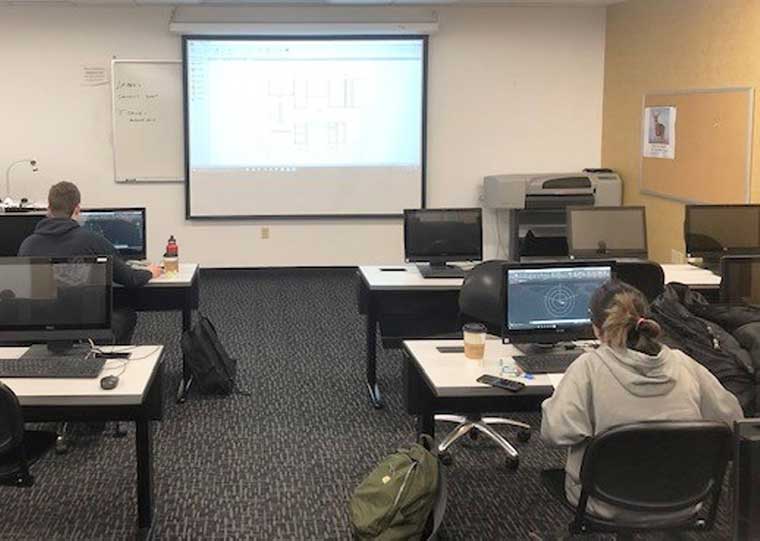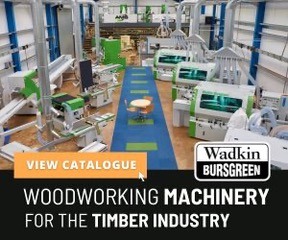Evolving technologies make it challenging to train the next generation of manufacturers, but Saint Paul College (Minnesota, US) embraces cutting-edge practices to ensure that its graduates are prepared for working life.
“Our program is strictly a cabinetmaking program, and we expose our students to the practices of both traditional and modern cabinetmaking,” says Instructor Tom Hillstead of Saint Paul College.
Hillstead, a graduate of the college’s cabinetmaking program, worked in the manufacturing industry until he was hired as an instructor at his alma mater in 2002. As someone for whom a four-year college education centred solely on academics was not a good fit, he is well equipped to understand the desires and talents unique to his students.

“I’m your typical technical college instructor: I went through the program, got into the industry and along the way got into teaching. I liked the idea of working with my hands and being a part of the production process,” says Hillstead, who became a lead instructor at the college in 2005. “I look at myself not as their instructor, but as their on-the-job mentor.”
Twenty-nine is the average age of students enrolled in the program, which is popular among those who have been in the workforce and wanted to make a career change. The program takes one year to complete, and while graduates of the program have the option to earn an associate’s degree by completing the required additional academic course load, most earn a cabinetmaking diploma and set out for the workforce.
“We get people who come into the program who have a little woodworking experience, and some who’ve never touched a tool in their lives,” he says. “We see a lot of students who already have families and work experience; who have a four-year degree but want to do something more creative.”
In 2009, the college adopted the Alphacam CAM system, and the Cabinet Vision design-to-manufacturing solution as teaching tools to prepare students for CNC manufacturing.
“When I was introduced to it, I kind of liked the idea of running parts through machines. I realised even then that you either jump on board or fall behind,” says Hillstead, who was working in the industry in the 1990s, when use of CAM software and CNC machinery became increasingly prevalent. “The technology is definitely not eliminating jobs, but it is redefining them and creating them.”
Cabinetmaking students at Saint Paul College are provided with an educational experience as close as possible to a real-life manufacturing environment. Class sizes are limited to a maximum of 24 students, which ensures a high level of individual attention.
“What we do in the program are larger production-based projects for non-profit-making organisations, such as Homeward Bound, for instance,” Hillstead explains. “We partner with other programs and every year we do a kitchen remodel for one of their homes. My students get to use the software and machinery in a production environment.”
To begin their projects, students visit installation sites, where they take measurements and assess potential challenges. “To me, that’s a better way to learn, to do real-world projects— and we’re teaching them to give something back at the same time. We’re also teaching the kind of skills that will make them more successful in the workforce, such as getting to work on time, setting goals, and being able to meet deadlines.”
Field measurement, project design and planning, cutlists and material management,t are all part of the real-world learning process. Students receive instruction on traditional construction methods before they move on to CNC production. “We’ll use Cabinet Vision to generate cutlists, then pull off the door and drawer box cutlists and have them fabricate those with traditional equipment.”

Once the students have a firm grasp on traditional construction methods, they begin using Cabinet Vision for project design.
“We spend a lot of time learning how to do the layout, and they go into Cabinet Vision to do a lot of editing. As we go through, we learn how to nest parts and send the code to the machine. Once they’re hired, they should be able to sit behind a computer pretty quickly and be able to do it on their own.”
The college utilises Alphacam to cut complex shapes, such as side engravings on doors or one-of-a-kind parts for reception desks. “We use Alphacam more for individual, and often odd parts, and we spend a lot of time with that.”
Students take pride in completed projects, which enables them to experience the satisfaction of a job well done. “For me, the best days of the year are when we finish up and install, when we’re at the job site and the students are out there taking pictures.”
Hillstead notes that jobs for graduates are plentiful, which provides them with the opportunity to pick and choose among preferred specialities, such as commercial or residential woodwork, as well as whether they’d like to work for ‘mom-and-pop’ shops, manufacturers on a national scale, and everything in between.
“The opportunities out there for students are just fantastic,” he says. “People know that there are shortages in terms of skilled labour, but don’t really understand what these jobs are. Many of these are high tech positions. You have to be pretty good with computers and you have to have math skills.”
Graduates of Saint Paul College are frequently hired by shops in Minnesota and Wisconsin, which means that the school is a boon to the local economy.
“With a lot of trade jobs, there was a time when you could just hire someone off the street and they could do the job. Now, employers are going to technical colleges because they want people interested in the trade, and who are skilled,” Hillstead says. “Unfortunately, we don’t have enough students to cover all of the jobs that are out there. Our students probably have never had the level of choices that they have right now.”








